
Personality psychology is a rich and diverse field that seeks to understand the patterns of thoughts, feelings, and behaviors that make each individual unique. Over the past century, numerous thinkers have proposed theories and models to explain the complex nature of human personality, each emphasizing different aspects of psychological functioning and drawing upon various research methods. This article provides a comprehensive review of the key pioneers, perspectives, and paradigms that have shaped the landscape of personality psychology, from the early psychodynamic theories of Sigmund Freud and Carl Jung to the trait models of Gordon Allport, Raymond Cattell, and Hans Eysenck, the interpersonal circumplex of Timothy Leary, and integrative frameworks proposed by contemporary scholars.
The article is organized into several main sections, each focusing on a major school of thought or approach within personality psychology. The first section explores the psychodynamic tradition, which emphasizes the role of unconscious conflicts, defenses, and motivations in shaping personality. Here, we will examine the ideas of Freud, Jung, Adler, Horney, and Erikson, among others, and consider their implications for understanding individual differences.
The second section turns to the trait perspective, which seeks to identify and measure the basic dimensions of personality that remain relatively stable across time and situations. We will delve into the work of Allport, Cattell, and Eysenck, as well as the influential Five-Factor Model (or “Big Five”) that has emerged from decades of factor-analytic research. Along the way, we will consider the conceptual and methodological challenges involved in developing a comprehensive taxonomy of personality traits.
The third section examines the interpersonal approach to personality, which focuses on how individuals relate to and interact with others. Here, we will explore the ideas of Timothy Leary and his Interpersonal Circle (or Circumplex) Model, which maps personality traits onto a two-dimensional space defined by dominance-submission and love-hate. We will also consider how Leary’s model relates to other interpersonal frameworks and how it can be applied in clinical and organizational settings.
The fourth section reviews several integrative and multivariate approaches to personality that have emerged in recent years, drawing upon insights from various schools of thought. These include the Myers-Briggs Type Indicator (MBTI), which combines elements of Jungian theory with a trait-based approach; the HEXACO model, which expands upon the Big Five by adding a sixth factor of Honesty-Humility; and the Interpersonal Reconstructive Therapy (IRT) framework, which integrates psychodynamic, interpersonal, and cognitive-behavioral perspectives. We will consider the strengths and limitations of each of these models and their implications for personality assessment and intervention.
Throughout the article, we will highlight key theoretical concepts, research findings, and practical applications related to each approach, as well as areas of convergence and divergence among them. We will also consider how personality psychology has evolved over time, as new methods and technologies have emerged and as the field has become increasingly interdisciplinary and globalized. By the end of this review, readers will have gained a deep appreciation for the richness and complexity of personality psychology, as well as a roadmap for navigating its many perspectives and paradigms.
Psychodynamic Approaches to Personality
“The unconscious is the true psychical reality; in its innermost nature it is as much unknown to us as the reality of the external world, and it is as incompletely presented by the data of consciousness as is the external world by the communications of our sense organs.” – Sigmund Freud
Sigmund Freud’s Psychoanalytic Theory
Sigmund Freud (1856-1939), the founder of psychoanalysis, proposed a revolutionary model of the mind that emphasized the role of unconscious conflicts, desires, and defenses in shaping personality. According to Freud, the mind consists of three interacting structures: the id (the primitive, pleasure-seeking part of the mind), the ego (the rational, reality-oriented part), and the superego (the moral, guilt-inducing part). Personality develops through a series of psychosexual stages (oral, anal, phallic, latent, and genital), each characterized by a particular erogenous zone and set of conflicts. Fixation at any of these stages can lead to specific personality traits and neurotic symptoms.
Freud also introduced the concept of defense mechanisms, unconscious strategies used by the ego to manage anxiety and resolve conflicts. These include repression (pushing threatening thoughts and feelings out of consciousness), projection (attributing one’s own unacceptable impulses to others), displacement (redirecting emotional reactions from their original target to a safer substitute), and sublimation (channeling primitive drives into socially acceptable pursuits). While many of Freud’s specific ideas have been challenged or revised over time, his emphasis on the dynamic interplay of conscious and unconscious processes laid the foundation for subsequent psychodynamic theories.
Freud’s Typology: Libido, Ego, and Superego Types
Although Freud did not develop a formal typology, he proposed that individuals can be loosely categorized based on the relative strength of their id, ego, and superego. Those with a dominant id are driven by primitive, instinctual desires; those with a strong ego are more rational and reality-oriented; and those with a prominent superego are highly moralistic and guilt-prone. These types reflect different levels of psychosexual development and different strategies for managing intrapsychic conflicts.
Carl Jung’s Analytical Psychology
“The meeting of two personalities is like the contact of two chemical substances: if there is any reaction, both are transformed.” – Carl Jung
Carl Jung (1875-1961), a Swiss psychiatrist and former disciple of Freud, developed a more expansive and mystical conception of the unconscious mind. Jung agreed with Freud that the unconscious plays a crucial role in shaping personality, but he argued that it contains not only personal material, but also collective elements shared by all humans. These include archetypes (universal symbols and patterns that appear in myths, dreams, and religions across cultures), the persona (the social mask we wear to conform to society’s expectations), the shadow (the dark, repressed aspects of the self), the anima/animus (the unconscious feminine side of a man’s personality and the masculine side of a woman’s), and the Self (the central, integrating principle of the psyche).
For Jung, the goal of personality development is individuation, the lifelong process of integrating the conscious and unconscious aspects of the psyche to achieve wholeness and self-realization. This involves confronting and assimilating the shadow, withdrawing projections, and developing a more authentic and individuated sense of self. Jung’s ideas have been influential in the development of personality typologies, psychotherapy, and the study of religion and spirituality.
Jung’s Typology:
The Myers-Briggs Type Indicator (MBTI) Based on Jung’s theory of psychological types, the Myers-Briggs Type Indicator (MBTI) is a widely used personality assessment tool that classifies individuals along four dichotomies:
Extraversion (E) vs. Introversion (I):
Outer-directed vs. inner-directed
Sensing (S) vs. Intuition (N):
Concrete vs. abstract perception
Thinking (T) vs. Feeling (F):
Logical vs. values-based decision-making
Judging (J) vs. Perceiving (P):
Planned vs. spontaneous orientation
These four dichotomies yield 16 possible personality types (e.g., INTJ, ESFP), each with its own set of strengths, weaknesses, and developmental challenges. The MBTI has been widely used in educational, organizational, and counseling settings, although its scientific validity remains controversial.
John Beebe’s Eight-Function Model
Building on Jung’s theory of psychological types, John Beebe, a Jungian analyst, developed an eight-function model that associates each of the eight cognitive functions (the four functions of thinking, feeling, sensation, and intuition, each in extraverted and introverted forms) with a specific archetypal role. These archetypes include the Hero, Parent, Child, inferior function (Shadow), opposing personality, Senex/Witch, Trickster, and Daemon.
Beebe’s model provides a deeper understanding of how the cognitive functions manifest in personality, not only as conscious preferences but also as unconscious patterns and complexes. It offers insights into the dynamics of personality development, interpersonal relationships, and the process of individuation. The eight-function model is often used in conjunction with the Myers-Briggs Type Indicator (MBTI) to provide a more nuanced and comprehensive understanding of personality types.
Alfred Adler’s Individual Psychology
“The chief danger in life is that you may take too many precautions.” – Alfred Adler
Alfred Adler (1870-1937), an Austrian psychiatrist and early follower of Freud, developed a distinctive approach to personality known as individual psychology. Adler broke with Freud’s emphasis on sexual drives and instead focused on the individual’s striving for superiority and social belonging. He proposed that each person is born with a sense of inferiority, which motivates them to compensate through the pursuit of personal goals and the development of a unique lifestyle.
Adler introduced several key concepts, such as the creative self (the individual’s subjective interpretation of experiences and creation of personal meaning), fictional finalism (the imagined ideal that guides the individual’s strivings), and social interest (the innate capacity for cooperation and concern for others). For Adler, mental health involves overcoming feelings of inferiority through constructive action, developing a strong sense of social interest, and contributing to the well-being of others.
Adler’s Typology: The Four Mistaken Goals
Adler proposed that individuals who fail to develop social interest and pursue superiority in maladaptive ways tend to adopt one of four “mistaken goals”:
- Attention-seeking: Behaving in ways that attract notice and sympathy from others.
- Power-seeking: Striving for control and dominance over others.
- Revenge-seeking: Trying to get even or hurt those who are perceived as threats.
- Displaying inadequacy: Giving up and withdrawing to avoid the challenges of life.
These mistaken goals reflect different ways of coping with feelings of inferiority and insecurity, and they can lead to a range of interpersonal and psychological difficulties. Adler’s typology highlights the importance of identifying and modifying the faulty assumptions and self-defeating behaviors that underlie these maladaptive patterns.
Karen Horney’s Interpersonal Theory
“The neurotic personality of our time is characterized by a feeling of being isolated and helpless in a hostile world.” – Karen Horney
Karen Horney (1885-1952), a German-American psychoanalyst, developed a theory of personality that emphasized the impact of social and cultural factors on psychological development. Horney argued that individuals develop basic anxiety as a result of feeling isolated, helpless, and threatened in a potentially hostile world. To cope with this anxiety, they adopt one of three interpersonal styles: moving toward people (the compliant type), moving against people (the aggressive type), or moving away from people (the detached type).
Horney also introduced the concept of the “tyranny of the shoulds,” referring to the unrealistic and perfectionistic demands that neurotic individuals place on themselves and others. These inner dictates are often internalized from early experiences of parental criticism, neglect, or overindulgence, and they can lead to chronic feelings of inadequacy, self-doubt, and resentment. For Horney, the key to psychological growth is to recognize and challenge these tyrannical shoulds, develop a more realistic and compassionate sense of self, and cultivate genuine, reciprocal relationships with others.
Horney’s Typology: The Three Neurotic Trends
Horney proposed that individuals who struggle with basic anxiety tend to adopt one of three neurotic trends:
- The compliant type: Moves toward people by seeking love, approval, and affection.
- The aggressive type: Moves against people by seeking power, control, and dominance.
- The detached type: Moves away from people by seeking independence, self-sufficiency, and solitude.
While each of these trends can be adaptive in moderation, an overemphasis on any one of them can lead to psychological distress and interpersonal difficulties. Horney’s typology highlights the importance of understanding the interpersonal dynamics and self-protective strategies that shape personality development.
Erik Erikson’s Psychosocial Theory
“In the social jungle of human existence, there is no feeling of being alive without a sense of identity.” – Erik Erikson
Erik Erikson (1902-1994), a German-American psychoanalyst and developmental psychologist, extended Freudian theory to encompass the entire lifespan. Erikson proposed that personality develops through eight stages, each characterized by a specific psychosocial crisis or conflict. These stages are: trust vs. mistrust (infancy), autonomy vs. shame and doubt (early childhood), initiative vs. guilt (preschool), industry vs. inferiority (middle childhood), identity vs. role confusion (adolescence), intimacy vs. isolation (young adulthood), generativity vs. stagnation (middle adulthood), and ego integrity vs. despair (late adulthood).
Erikson emphasized the social and cultural dimensions of personality development, arguing that the resolution of each stage-specific crisis depends on the individual’s interactions with significant others and the broader social environment. Successful resolution of these crises leads to the development of specific strengths or virtues (e.g., hope, will, purpose, competence, fidelity, love, care, and wisdom), which contribute to a sense of ego identity and psychosocial well-being. Erikson’s theory has been widely influential in the fields of developmental, personality, and clinical psychology.
Erikson’s Typology: The Eight Ego Virtues
Corresponding to the eight stages of psychosocial development, Erikson proposed eight ego virtues that emerge from the successful resolution of each crisis:
- Hope: Trust in oneself and others, despite the uncertainties of life.
- Will: Sense of autonomy and control over one’s choices and actions.
- Purpose: Initiative and direction in pursuing meaningful goals.
- Competence: Confidence in one’s abilities and achievements.
- Fidelity: Loyalty to one’s values, beliefs, and commitments.
- Love: Capacity for intimacy, mutual sharing, and deep relationships.
- Care: Concern for others and commitment to guiding future generations.
- Wisdom: Acceptance of one’s life journey and a sense of integrity in the face of mortality.
These virtues reflect the positive outcomes of healthy personality development and the foundation for a fulfilling and generative life. Erikson’s typology emphasizes the importance of cultivating these strengths throughout the lifespan and the role of social support in facilitating their emergence.
Eric Berne’s Transactional Analysis
Eric Berne (1910-1970), a Canadian-born psychiatrist, developed transactional analysis (TA) as a theory of personality and a system of psychotherapy. Central to TA is the concept of ego states, which are defined as consistent patterns of feeling, thinking, and behaving. Berne identified three primary ego states:
Parent: A state derived from parental figures, characterized by critical or nurturing attitudes and behaviors.
Adult: A state oriented towards objective, rational processing of information and problem-solving.
Child: A state derived from childhood experiences, characterized by natural, spontaneous, and creative or rebellious attitudes and behaviors.
Berne proposed that interpersonal communication (transactions) occurs between ego states, and that these transactions can be analyzed to understand and improve interpersonal relationships. He also introduced the concept of life scripts, which are unconscious life plans formed in childhood that influence adult behavior and decision-making. TA has been widely applied in clinical, educational, and organizational settings to promote personal growth, effective communication, and healthier relationships. It shares some common ground with psychodynamic and humanistic approaches, while also offering a practical framework for understanding and changing patterns of thought, feeling, and behavior.
Trait and Factor Theories of Personality
“Personality is the dynamic organization within the individual of those psychophysical systems that determine his characteristics behavior and thought.” – Gordon Allport
Gordon Allport’s Psychology of the Individual
Gordon Allport (1897-1967) was a key figure in the development of trait theory, which aims to describe personality in terms of enduring characteristics that influence behavior across situations. Allport defined traits as “neuropsychic structures” that have the capacity to render many stimuli functionally equivalent and to initiate and guide consistent forms of behavior. He distinguished between three types of traits: cardinal traits (highly generalized dispositions that exert a pervasive influence on behavior), central traits (core characteristics that shape much of an individual’s behavior), and secondary traits (more specific and situational characteristics).
Allport also introduced the concept of functional autonomy, which suggests that some motives and behaviors that originally developed to serve a specific purpose can become independent and self-sustaining over time. For example, a child who initially practices the piano to please her parents may eventually come to enjoy playing for its own sake. Allport’s emphasis on the uniqueness of each individual and the importance of studying the whole person (idiographic approach) has had a lasting influence on personality psychology.
Allport’s Typology: The Study of Lives
Rather than proposing a formal typology, Allport advocated for the intensive study of individual lives to understand the complex interplay of traits, motives, values, and experiences that shape each person’s unique personality. He argued that by examining personal documents, such as diaries, letters, and autobiographies, researchers could gain insight into the dynamic organization of personality and the ways in which individuals construct meaning and purpose in their lives. This idiographic approach laid the foundation for subsequent research on life narratives, personal strivings, and the development of identity over the lifespan.
Raymond Cattell and the 16PF Model
“Personality is that which permits a prediction of what a person will do in a given situation.” – Raymond Cattell
Raymond Cattell (1905-1998) was a pioneering psychologist who applied factor analysis to the study of personality. By analyzing patterns of correlations among various trait measures, Cattell identified 16 primary factors that he believed represented the basic dimensions of personality. These factors, which formed the basis for his Sixteen Personality Factor Questionnaire (16PF), include traits such as warmth, reasoning, emotional stability, dominance, liveliness, rule-consciousness, social boldness, sensitivity, vigilance, abstractedness, privateness, apprehension, openness to change, self-reliance, perfectionism, and tension.
Cattell also distinguished between surface traits (observable clusters of behavior) and source traits (the underlying, causative factors that give rise to surface traits). He argued that by identifying the key source traits, psychologists could develop a more parsimonious and explanatory model of personality. Cattell’s work helped to establish personality psychology as a quantitative, empirically-based discipline and paved the way for subsequent factor-analytic models.
Cattell’s Typology: The 16PF Global Factors
In addition to the 16 primary factors, Cattell proposed five global factors that represent higher-order clusters of traits:
- Extraversion: Outgoing, socially bold, and assertive vs. reserved, shy, and introverted.
- Anxiety: Tense, apprehensive, and prone to guilt vs. relaxed, confident, and emotionally stable.
- Tough-Mindedness: Practical, objective, and unsentimental vs. sensitive,intuitive, and open to experience. Psychoticism: Aggressive, antisocial, and prone to psychosis vs. altruistic, conforming, and empathetic.
- Independence: Self-sufficient, resourceful, and individualistic vs. accommodating, affiliative, and group-oriented.
These global factors provide a broader framework for understanding personality patterns and their relationship to important life outcomes. Cattell’s model has been widely used in research, clinical, and organizational settings, and it has influenced the development of subsequent trait models.
Hans Eysenck’s Three-Factor Model
“Personality is the sum-total of the actual or potential behavior-patterns of the organism, as determined by heredity and environment.” – Hans Eysenck
Hans Eysenck (1916-1997) was a prominent British psychologist who developed a highly influential model of personality based on three broad dimensions: Extraversion (E), Neuroticism (N), and Psychoticism (P). Eysenck argued that these traits are rooted in individual differences in brain function and reactivity, with Extraversion reflecting the balance of excitation and inhibition in the cortex, Neuroticism reflecting the activity of the limbic system, and Psychoticism reflecting the activity of the dopaminergic system. Eysenck’s model, known as the PEN or Big Three model, has been extensively researched and has demonstrated strong links to a range of behavioral, emotional, and health outcomes. For example, individuals high in Extraversion tend to be sociable, assertive, and sensation-seeking, while those high in Neuroticism are prone to anxiety, depression, and emotional instability. Psychoticism, the most controversial of Eysenck’s dimensions, is associated with aggression, impulsivity, and unconventionality, and it has been linked to creativity as well as to various forms of psychopathology.
Eysenck’s Typology: The Four Temperaments
Building on the ancient Greek concept of the four humors, Eysenck proposed that different combinations of Extraversion and Neuroticism give rise to four basic temperament types:
Choleric (high E, high N): Restless, excitable, and prone to mood swings.
Sanguine (high E, low N): Sociable, lively, and optimistic.
Phlegmatic (low E, low N): Calm, reliable, and even-tempered.
Melancholic (low E, high N): Anxious, pessimistic, and withdrawn.
These temperaments reflect enduring patterns of emotional reactivity and behavioral tendencies that shape individual differences in personality. Eysenck’s typology has been influential in the study of personality and psychopathology, and it has informed the development of various assessment tools and therapeutic approaches.
The Five-Factor Model (Big Five)
“Personality traits are the relatively enduring patterns of thoughts, feelings, and behaviors that reflect the tendency to respond in certain ways under certain circumstances.” – Robert McCrae and Paul Costa
The Five-Factor Model (FFM), also known as the Big Five, is the most widely accepted and empirically validated model of personality traits. Developed through decades of factor-analytic research, the FFM identifies five broad dimensions that capture the core aspects of personality:
Openness to Experience (O):
Imaginative, curious, and open to new ideas vs. conventional, down-to-earth, and tradition-bound.
Conscientiousness (C):
Organized, responsible, and disciplined vs. spontaneous, flexible, and careless.
Extraversion (E):
Outgoing, energetic, and assertive vs. reserved, solitary, and quiet. Agreeableness (A): Warm, sympathetic, and cooperative vs. critical, combative, and suspicious.
Neuroticism (N):
Anxious, insecure, and emotionally unstable vs. calm, confident, and resilient.
The FFM has been replicated across cultures, age groups, and assessment methods, and it has demonstrated strong predictive validity for a wide range of important life outcomes, including academic achievement, job performance, relationship satisfaction, and mental and physical health. The model has also been integrated with other personality frameworks, such as the interpersonal circumplex and the attachment theory, and it has informed the development of various personality assessment tools, such as the NEO Personality Inventory (NEO-PI) and the Big Five Inventory (BFI).
The OCEAN of Personality: Traits, Facets, and Profiles
Each of the Big Five dimensions encompasses a range of more specific traits or facets that provide a more nuanced understanding of individual differences. For example, Openness includes facets such as fantasy, aesthetics, feelings, actions, ideas, and values, while Conscientiousness includes competence, order, dutifulness, achievement striving, self-discipline, and deliberation. By assessing individuals on these more specific facets, researchers and practitioners can develop detailed personality profiles that capture the unique configuration of traits that define each person’s character. The FFM has also been used to identify common personality types or clusters that emerge from different combinations of the five dimensions. For example, the “resilient” type is characterized by high levels of Openness, Conscientiousness, Extraversion, and Agreeableness, and low levels of Neuroticism, while the “overcontrolled” type exhibits the opposite pattern. These personality types have been linked to different patterns of adjustment, coping, and well-being across the lifespan, and they have implications for understanding individual differences in vulnerability to various forms of psychopathology.
Interpersonal Approaches to Personality
“There is no psychology of personality apart from interpersonal relationships.” – Timothy Leary
Timothy Leary’s Interpersonal Circumplex
Timothy Leary (1920-1996) was an American psychologist and counterculture figure who developed a pioneering model of personality based on the interpersonal circumplex. Drawing on the work of Harry Stack Sullivan and Karen Horney, Leary proposed that personality can be understood in terms of two primary dimensions: Dominance (power, control) and Love (affiliation, warmth). These dimensions form the axes of a circular model, or circumplex, that maps the full range of interpersonal behaviors and traits. Leary’s model identifies four quadrants of the circumplex, each associated with a distinct interpersonal style:
Dominant-Hostile (Aggressive): Competitive, blunt, and cynical.
Submissive-Hostile (Withdrawn): Skeptical, detached, and self-critical.
Submissive-Loving (Cooperative): Modest, agreeable, and accommodating.
Dominant-Loving (Responsible): Confident, outgoing, and supportive.
Within each quadrant, Leary further delineated more specific interpersonal traits and behaviors, such as autocratic, rebellious, dependent, and hypernormal. By assessing individuals’ typical patterns of relating to others along the dimensions of the circumplex, Leary argued that we can develop a comprehensive understanding of their personality and interpersonal functioning.
The Interpersonal Diagnosis of Personality
Leary’s model provided the basis for the Interpersonal Diagnosis of Personality (IDP), a comprehensive system for assessing and treating personality and relational difficulties. The IDP involves the use of various assessment tools, such as the Interpersonal Checklist (ICL) and the Interpersonal Behavior Inventory (IBI), which measure individuals’ self-reported and observed interpersonal behaviors and traits. By mapping these behaviors onto the circumplex, clinicians can identify maladaptive patterns and develop targeted interventions to promote more adaptive and fulfilling relationships. The IDP has been widely influential in the fields of clinical psychology, counseling, and organizational development. It has informed the development of various therapeutic approaches, such as interpersonal psychotherapy and circumplex-based couples therapy, and it has been applied to the study of group dynamics, leadership, and social interaction. The interpersonal circumplex has also been integrated with other personality models, such as the Five-Factor Model and attachment theory, providing a rich framework for understanding the complex interplay of traits, motives, and relational patterns that shape individual differences.
Contemporary Interpersonal
Models Building on Leary’s seminal work, contemporary researchers have expanded and refined the interpersonal approach to personality.
Some of the most influential models include:
The Interpersonal Adjective Scales (IAS) by Jerry Wiggins:A comprehensive assessment tool that measures individuals’ self-reported interpersonal traits and behaviors along the dimensions of the circumplex.
The Structural Analysis of Social Behavior (SASB) by Lorna Smith Benjamin: A complex model that maps interpersonal behaviors onto three dimensions (focus, affiliation, and interdependence) and two surfaces (transitive and intransitive), providing a nuanced understanding of relational patterns and their developmental origins.
The Interpersonal Reconstructive Therapy (IRT) by Lorna Smith Benjamin: An integrative therapeutic approach that combines elements of psychodynamic, cognitive-behavioral, and interpersonal theories to help individuals identify and modify maladaptive relational patterns.
The Interpersonal Sensitivities Circumplex (ISC) by Aaron Pincus and Michael Gurtman: A model that focuses on the interpersonal sensitivities or “hot buttons” that trigger maladaptive relational patterns and contribute to personality pathology.
These models have advanced our understanding of the complex dynamics of interpersonal behavior and their role in shaping personality development and adjustment. They have also informed the development of new assessment tools, therapeutic interventions, and research paradigms that are transforming the field of personality psychology.
Integrative and Emerging Approaches
The fourth section reviews several integrative and multivariate approaches to personality that have emerged in recent years, drawing upon insights from various schools of thought. These include the Myers-Briggs Type Indicator (MBTI), which combines elements of Jungian theory with a trait-based approach; the HEXACO model, which expands upon the Big Five by adding a sixth factor of Honesty-Humility; and the Interpersonal Reconstructive Therapy (IRT) framework, which integrates psychodynamic, interpersonal, and cognitive-behavioral perspectives. We will consider the strengths and limitations of each of these models and their implications for personality assessment and intervention. 4.1 Myers-Briggs Type Indicator (MBTI) Developed by Katharine Cook Briggs and her daughter Isabel Briggs Myers, the MBTI is a widely used personality assessment tool that draws upon Carl Jung’s theory of psychological types. The MBTI classifies individuals along four dichotomies:
Extraversion (E) vs. Introversion (I): Outer-directed vs. inner-directed focus
Sensing (S) vs. Intuition (N): Concrete vs. abstract perception
Thinking (T) vs. Feeling (F): Logical vs. values-based decision-making
Judging (J) vs. Perceiving (P): Structured vs. flexible approach to life
The combination of these preferences yields 16 distinct personality types (e.g., INTJ, ESFP), each associated with specific cognitive styles, communication patterns, and interpersonal dynamics. While the MBTI has gained immense popularity in organizational, educational, and self-help contexts, its psychometric properties and theoretical foundations have been subject to criticism. Nonetheless, the MBTI remains a useful tool for promoting self-awareness, understanding individual differences, and facilitating communication and teamwork.
HEXACO Model
The HEXACO model, developed by Michael Ashton and Kibeom Lee, is a six-factor model of personality that expands upon the Big Five. In addition to the five factors of the FFM (Openness, Conscientiousness, Extraversion, Agreeableness, and Neuroticism), the HEXACO model includes a sixth factor called Honesty-Humility (H). This factor captures traits such as sincerity, fairness, greed avoidance, and modesty, which are not well represented in the Big Five. The HEXACO model has demonstrated incremental validity over the FFM in predicting various criteria, such as workplace delinquency, sexual behavior, and political attitudes. It has also shown cross-cultural replicability and has been linked to important biological and evolutionary factors. The inclusion of the Honesty-Humility dimension provides a more comprehensive and nuanced understanding of individual differences in moral character and social behavior.
Interpersonal Reconstructive
Therapy (IRT) Developed by Lorna Smith Benjamin, IRT is an integrative framework that combines insights from psychodynamic, interpersonal, and cognitive-behavioral theories. IRT posits that personality pathology arises from early maladaptive interpersonal patterns that are internalized and reenacted throughout life. These patterns are organized around three key dimensions: attachment (love vs. hate), control (dominance vs. submission), and autonomy (enmeshment vs. differentiation). IRT aims to help individuals identify and modify these maladaptive patterns through a process of interpersonal learning and reconstruction. This involves developing a collaborative therapeutic relationship, exploring the developmental origins of dysfunctional patterns, and practicing new ways of relating to others. IRT has been applied to a wide range of personality disorders and has demonstrated effectiveness in both individual and group settings.
Psychobiological Approaches
In recent years, there has been a growing interest in the biological underpinnings of personality, including genetic, neurochemical, and physiological factors. Psychobiological models seek to integrate findings from neuroscience, behavioral genetics, and evolutionary psychology to provide a more comprehensive understanding of individual differences. Some of the most influential psychobiological models include:
Reinforcement Sensitivity Theory (RST) by Jeffrey Gray: Proposes that individual differences in personality arise from variations in the sensitivity of three neurobiological systems: the Behavioral Approach System (BAS), the Behavioral Inhibition System (BIS), and the Fight-Flight-Freeze System (FFFS). Evolutionary Personality Psychology by David Buss: Argues that personality traits represent evolved psychological mechanisms that have been shaped by natural and sexual selection to solve adaptive problems related to survival and reproduction. Temperament and Character Inventory (TCI) by Robert Cloninger: A seven-factor model that distinguishes between biologically based temperaments (Novelty Seeking, Harm Avoidance, Reward Dependence, and Persistence) and acquired character traits (Self-Directedness, Cooperativeness, and Self-Transcendence).
These models have advanced our understanding of the complex interplay of nature and nurture in shaping personality development and have opened up new avenues for research and intervention. 4.5 Integrative and Multivariate Approaches As the field of personality psychology has evolved, there has been a growing recognition of the need for integrative and multivariate approaches that draw upon the strengths of different theoretical traditions. Some of the most promising developments in this regard include:
The Personality Systems Framework (PSF) by John Mayer:
A comprehensive model that organizes personality into four broad domains: motivation, cognition, emotion, and behavior. The PSF emphasizes the dynamic interactions among these domains and the importance of self-regulation and self-awareness in personality functioning.
The Cybernetic Big Five Theory (CB5T) by Colin DeYoung:
An integrative model that links the Big Five traits to the functioning of cybernetic systems involved in goal pursuit, exploration, and error detection. The CB5T provides a framework for understanding the neurobiological and cognitive underpinnings of personality and their implications for adaptive behavior.
The Interdependent Self-Construal Model (ISC) by Shigehiro Oishi and Uskul:
A cross-cultural model that emphasizes the role of cultural values and self-construals in shaping personality development and expression. The ISC highlights the importance of considering cultural context in understanding individual differences and their implications for well-being and social functioning.
Robert Cloninger’s Psychobiological Model
Robert Cloninger, an American psychiatrist and geneticist, developed a psychobiological model of personality that integrates findings from neurobiology, behavioral genetics, and developmental psychology. The Temperament and Character Inventory (TCI), based on this model, assesses seven dimensions of personality:
Temperament dimensions (largely genetically determined and stable throughout life):
- Novelty Seeking: Tendency towards exploratory activity and excitement in response to novel stimuli.
- Harm Avoidance: Tendency to respond intensely to signals of aversive stimuli and to avoid punishment, novelty, and non-reward.
- Reward Dependence: Tendency to respond intensely to signals of reward and to maintain behavior previously associated with rewards.
- Persistence: Tendency to persevere despite frustration and fatigue.
Character dimensions (influenced by learning and maturation):
- Self-Directedness: Ability to regulate and adapt behavior in accordance with personal goals and values.
- Cooperativeness: Degree of identification with and acceptance of others.
- Self-Transcendence: Degree of identification with the unity of all things and openness to spiritual experiences.
Cloninger’s model has been influential in the study of the biological bases of personality and in the development of a comprehensive framework for understanding the interplay of nature and nurture in shaping individual differences. It has also been applied in clinical settings to guide diagnosis and treatment of personality disorders and other mental health conditions.
Mihaly Csikszentmihalyi’s Flow Theory
Mihaly Csikszentmihalyi, a Hungarian-American psychologist, developed the concept of flow, a state of optimal experience characterized by complete absorption in an activity, deep concentration, and a sense of mastery and enjoyment. According to Csikszentmihalyi, the key to achieving flow is finding a balance between the challenges of a task and one’s skills, setting clear goals, and receiving immediate feedback. While not a comprehensive theory of personality per se, Csikszentmihalyi’s work on flow has important implications for understanding individual differences in motivation, creativity, and well-being. It highlights the role of engagement and intrinsic motivation in shaping positive experiences and personal growth.
10.2. Kazimierz Dabrowski’s Theory of Positive Disintegration Kazimierz Dabrowski (1902-1980), a Polish psychiatrist and psychologist, developed the theory of positive disintegration, which posits that personality development occurs through a process of psychological disintegration and reintegration. According to Dabrowski, individuals with high developmental potential experience inner conflicts and crises that lead to the breakdown of existing psychological structures and the emergence of higher levels of personality functioning. Dabrowski identified five levels of personality development, ranging from primary integration (characterized by automatic and instinctual behavior) to secondary integration (characterized by autonomy, self-awareness, and a commitment to universal values). He also proposed five overexcitabilities (psychomotor, sensual, imaginational, intellectual, and emotional) that contribute to the developmental potential and the experience of positive disintegration. While not as widely known as some other personality theories, Dabrowski’s work offers a unique perspective on the role of inner conflict, emotional intensity, and existential crisis in the process of personal growth and self-actualization. It has influenced research on giftedness, creativity, and advanced personality development.
In Review
Ultimately, the goal of personality psychology is to shed light on the enduring question of what makes each of us unique and how we can live fulfilling and meaningful lives in the context of our social worlds. By integrating insights from diverse theoretical perspectives and research traditions, and by remaining open to new discoveries and innovations, the field has the potential to make significant contributions to this enduring quest for self-understanding and personal growth.
As we conclude this comprehensive review of the landscape of personality psychology, it is clear that the field has made remarkable progress in illuminating the complex and multifaceted nature of human individuality. From the pioneering insights of early theorists to the cutting-edge research of contemporary scholars, personality psychology has provided a rich and evolving framework for understanding the patterns of thoughts, feelings, and behaviors that define each of us as unique individuals.
At the same time, it is important to recognize that no single theory or approach can fully capture the complexity and diversity of human personality. Each perspective offers valuable insights and contributions, but also faces its own limitations and challenges. The psychodynamic tradition, for example, has shed light on the unconscious conflicts and motivations that shape personality, but has struggled with empirical validation and falsifiability. The trait perspective has provided a robust and reliable taxonomy of individual differences, but has been criticized for its descriptive rather than explanatory focus. The interpersonal approach has illuminated the social and relational dynamics that underlie personality functioning, but has faced challenges in integrating with other levels of analysis, such as the biological and the cultural.
Recognizing these limitations and challenges, the field of personality psychology has increasingly moved toward integrative and multivariate approaches that seek to bridge different levels of analysis and theoretical traditions. Models such as the Personality Systems Framework, the Cybernetic Big Five Theory, and the Interdependent Self-Construal Model represent promising developments in this regard, offering new frameworks for understanding the complex interplay of biological, cognitive, affective, and social factors that shape personality development and expression.
As the field continues to evolve and advance, it will be important to remain open to new theoretical insights, methodological innovations, and empirical findings from across the psychological sciences. By drawing upon the strengths of different research traditions and by integrating findings from neuroscience, genetics, evolutionary psychology, and cultural psychology, personality researchers can develop a more comprehensive and contextually sensitive understanding of individual differences and their implications for adaptive functioning and well-being.
Ultimately, the enduring value of personality psychology lies in its potential to shed light on the fundamental question of what makes each of us unique and how we can live fulfilling and meaningful lives in the context of our social worlds. By providing a scientific framework for understanding the complex patterns of thoughts, feelings, and behaviors that define human individuality, personality psychology can inform efforts to promote personal growth, interpersonal harmony, and societal well-being. As we look to the future of the field, it will be important to remain committed to this larger vision, while also embracing the ongoing challenges and opportunities that come with the study of the human mind and spirit.
Bibliography
Allport, G. W. (1937). Personality: A psychological interpretation. Henry Holt and Company.
Ashton, M. C., & Lee, K. (2007). Empirical, theoretical, and practical advantages of the HEXACO model of personality structure. Personality and Social Psychology Review, 11(2), 150-166.
Beck, A. T., Freeman, A., & Davis, D. D. (2015). Cognitive therapy of personality disorders. Guilford Publications.
Benjamin, L. S. (1996). Interpersonal diagnosis and treatment of personality disorders. Guilford Press.
Berne, E. (1961). Transactional analysis in psychotherapy: A systematic individual and social psychiatry. Grove Press.
Briggs, K. C., & Myers, I. B. (1995). Gifts differing: Understanding personality type. Nicholas Brealey Publishing.
Cattell, R. B. (1965). The scientific analysis of personality. Penguin Books.
Cloninger, C. R., Svrakic, D. M., & Przybeck, T. R. (1993). A psychobiological model of temperament and character. Archives of General Psychiatry, 50(12), 975-990.
Costa Jr, P. T., & McCrae, R. R. (1992). Four ways five factors are basic. Personality and Individual Differences, 13(6), 653-665.
DeYoung, C. G. (2015). Cybernetic big five theory. Journal of Research in Personality, 56, 33-58.
Erikson, E. H. (1959). Identity and the life cycle. Psychological Issues, 1(1), 1-171.
Eysenck, H. J. (1967). The biological basis of personality. Thomas.
Freud, S. (1923/1961). The ego and the id. In J. Strachey (Ed. & Trans.), The standard edition of the complete psychological works of Sigmund Freud (Vol. 19, pp. 3-66). Hogarth Press.
Gray, J. A. (1982). The neuropsychology of anxiety: An enquiry into the functions of the septo-hippocampal system. Oxford University Press.
Horney, K. (1939). New ways in psychoanalysis. W.W. Norton & Co.
Jung, C. G. (1971). Collected works of C.G. Jung (Vol. 6): Psychological types. Princeton University Press.
Kelly, G. A. (1955). The psychology of personal constructs. W.W. Norton & Co.
Leary, T. (1957). Interpersonal diagnosis of personality. Ronald Press.
Lowen, A. (1975). Bioenergetics: The revolutionary therapy that uses the language of the body to heal the problems of the mind. Coward, McCann & Geoghegan.
Maslow, A. H. (1954). Motivation and personality. Harper & Row.
Mayer, J. D. (2005). A tale of two visions: Can a new view of personality help integrate psychology?. American Psychologist, 60(4), 294-307.
McCrae, R. R., & John, O. P. (1992). An introduction to the five‐factor model and its applications. Journal of Personality, 60(2), 175-215.
Oishi, S., & Uskul, A. K. (2021). Culture and personality: New perspectives from cultural and indigenous psychology. Annual Review of Psychology, 72, 605-632.
Pincus, A. L., & Gurtman, M. B. (2006). Interpersonal theory and the interpersonal circumplex: Evolving perspectives on normal and abnormal personality. In S. Strack (Ed.), Differentiating normal and abnormal personality (2nd ed., pp. 83-111). Springer Publishing.
Reich, W. (1933/1980). Character analysis. Farrar, Straus, and Giroux.
Rogers, C. R. (1951). Client-centered therapy. Houghton Mifflin.
Skinner, B. F. (1953). Science and human behavior. Simon & Schuster.
Sullivan, H. S. (1953). The interpersonal theory of psychiatry. W.W. Norton & Co.
Wiggins, J. S. (1996). The five-factor model of personality: Theoretical perspectives. Guilford Press.
Young, J. E., Klosko, J. S., & Weishaar, M. E. (2003). Schema therapy: A practitioner’s guide. Guilford Press.


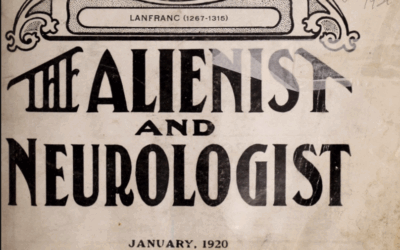





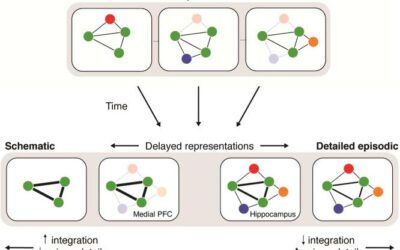

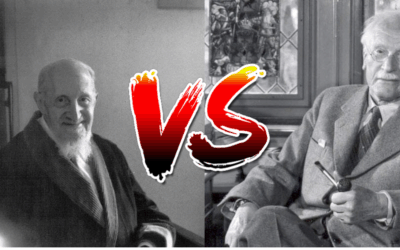






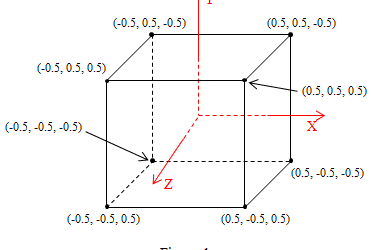


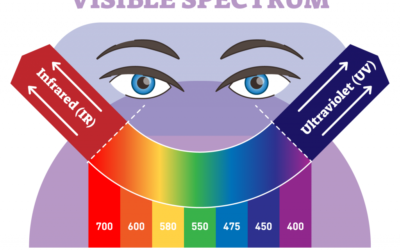




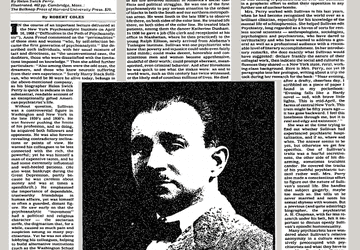

0 Comments